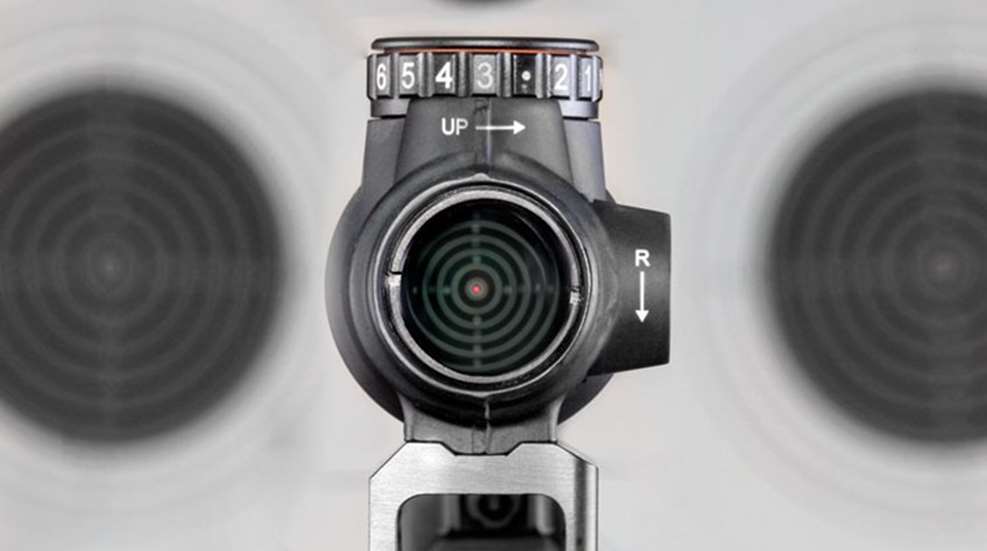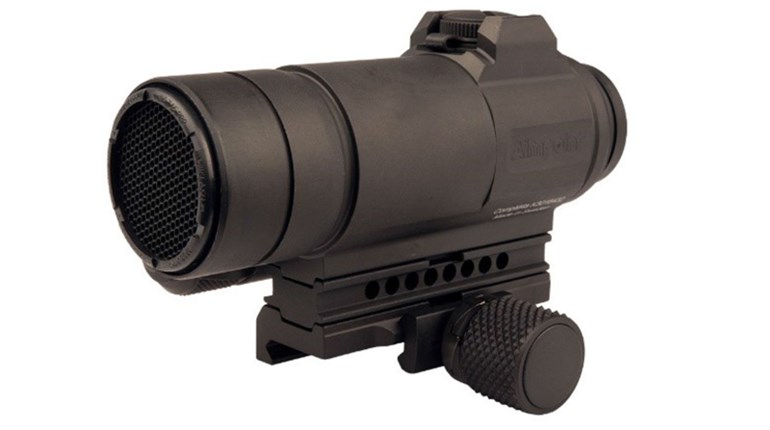
Although telescopes have been in use for centuries, wide acceptance of optical sights for use by hunters and shooters occurred only since the Twentieth Century. In that time, their reliability, durability and precision have improved. The attributes of an optical sight include:
Such is the popularity of optical sights today that about 90 percent of new factory rifles are subsequently equipped with a scope. But why? Here are the basic principles of optical sights.
Light is a form of electromagnetic energy that travels in the form of waves. The light spectrum that is visible to the human eye falls between the wavelengths of 350 and 700 nanometers. As one nanometer equals one-billionth of an inch, light waves are very short indeed. Different wavelengths within this range correspond to different colors perceived by the eye, with the shortest wavelengths in the violet range and the longest at the red end of the spectrum.
The operating principle of an optical sight is simple. A biconvex lens, with an outward curvature on both sights, magnifies the image. A second lens, placed at an appropriate distance from the first and optically aligned, in turn magnifies the image of the first. The image is also upside-down and reversed, thus an erector lens or a prism must be inserted into the system to put the image in its proper orientation. Although this may seem simple in description and principle, optical systems are complex compromises that achieve a balance among various optical properties.
Optical sights must contend with the fact that the speed of light varies in different media. When light waves travel from air to glass or glass to air, their velocity changes. In air, light travels at 186,000 miles per second, but slows to between 95,000 and 127,000 miles per second in glass depending upon its density. Additionally, when light waves cross from one medium to another at an angle to the interface, they change direction. This bending of the light waves' path in passing from one medium to another is called refraction. The amount that light is refracted can be calculated from the angle at which it strikes the interface (called the angle of incidence) and the optical density of the medium (called the index of refraction). The index of refraction is 1 for air and from 1.5 to 1.96 for optical glass. These basic phenomena allow optical engineers to design lens systems able to clearly focus and magnify images of distant objects.
In our next article, we cover the parts of a riflescope and what they do. Stay tuned!
- The reticle of an optical sight is presented in a single sighting plane. This eliminates the need to focus on the front and rear iron sights and the target at the same time.
- Optical sights often magnify the target image, thereby aiding positive target identification and precise shot placement. Reading wind/mirage is also made easier.
- Optical sights are easy to use for a wide range of shooters.
- Good quality optical sights are widely available and affordably priced.
- Most firearms are now designed and equipped to mount optical sights.
Such is the popularity of optical sights today that about 90 percent of new factory rifles are subsequently equipped with a scope. But why? Here are the basic principles of optical sights.
Light is a form of electromagnetic energy that travels in the form of waves. The light spectrum that is visible to the human eye falls between the wavelengths of 350 and 700 nanometers. As one nanometer equals one-billionth of an inch, light waves are very short indeed. Different wavelengths within this range correspond to different colors perceived by the eye, with the shortest wavelengths in the violet range and the longest at the red end of the spectrum.
The operating principle of an optical sight is simple. A biconvex lens, with an outward curvature on both sights, magnifies the image. A second lens, placed at an appropriate distance from the first and optically aligned, in turn magnifies the image of the first. The image is also upside-down and reversed, thus an erector lens or a prism must be inserted into the system to put the image in its proper orientation. Although this may seem simple in description and principle, optical systems are complex compromises that achieve a balance among various optical properties.
Optical sights must contend with the fact that the speed of light varies in different media. When light waves travel from air to glass or glass to air, their velocity changes. In air, light travels at 186,000 miles per second, but slows to between 95,000 and 127,000 miles per second in glass depending upon its density. Additionally, when light waves cross from one medium to another at an angle to the interface, they change direction. This bending of the light waves' path in passing from one medium to another is called refraction. The amount that light is refracted can be calculated from the angle at which it strikes the interface (called the angle of incidence) and the optical density of the medium (called the index of refraction). The index of refraction is 1 for air and from 1.5 to 1.96 for optical glass. These basic phenomena allow optical engineers to design lens systems able to clearly focus and magnify images of distant objects.
In our next article, we cover the parts of a riflescope and what they do. Stay tuned!





































